CorelDRAW: Usage of Objects
CorelDRAW: Usage of Objects
This chapter contains the following essential topics:
- Choosing objects
- Deleting, duplicating, and copying objects
- Transforming Objects
- Making boundary around chosen objects
- Making objects from disclosing areas
- Object coordinates usage to modify and create objects
- Copying objects effects, transformations, and properties
- Cloning objects
- Positioning objects
- Distributing and aligning objects
- Using object hinting
Choosing objects
Before we modify the object, we must choose it. We can choose the objects in that sequence in which these objects were created. We can marquee choose objects by disclosing them along with the rectangle's selection area or an irregular shape.
We can make selection collections that enable us to choose specific objects without collecting them simultaneously. Selection collections are connected with some numbers from range 0 to 9 and can be saved along with the document.
To choose the object
- Press the Pick tool, and press an object.

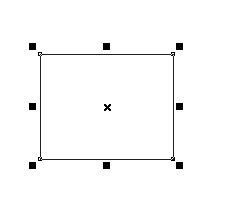
To choose multiple objects
- Press the Pick tool, keep pressing Shift, and press on all the objects that we wish to choose.
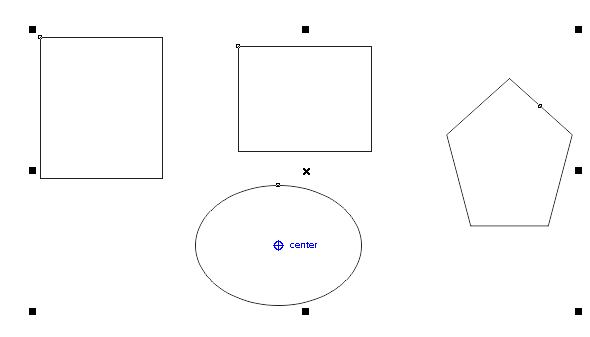
Deleting, duplicating, and copying objects
CorelDRAW facilitates us with various ways ideas to copy the objects. If we no longer require the object, we can also delete it.
Pasting, copying, and cutting
We can copy and cut an object for placing it over a clipboard, paste these objects into the drawing or other applications. Cutting the objects place it over a clipboard, remove these objects from drawing. Copying the objects and place these objects over a clipboard however keep an original one within a drawing.
To copy or cut the object
1. Choose an object.
2. Press Edit, and press any one from the following:
- Copy
- Cut
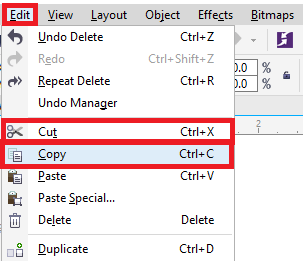
To paste the object
- Press Edit > Paste.
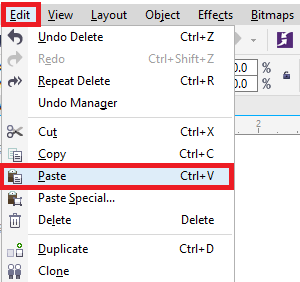
Duplicating
Pasting and copying an object is slower than duplicating. We can also describe the distance among the original and duplicate objects with the x-axis and y-axis. The distance is called offset.
To duplicate the object
- Choose an object.
- Press Edit > Duplicate.
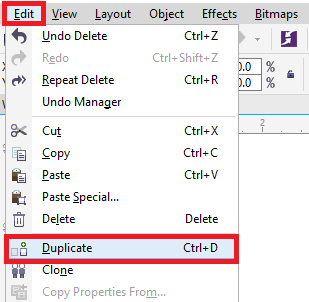
Transforming Objects
We can modify the object's representation inside a drawing window. Some essential key points are discussed as follows:
Sizing: It enables us to change the height and width of the object.
Scaling: It enables us to size the object to the original size's percentage.
To scale or size an object
- Drag the handle of corner selection.
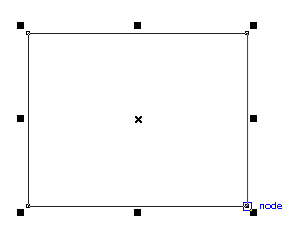
Skewing: enables us to slant the object to only one side.
To skew an object
- Press on the object for showing the skew handles, and then Drag the skew handle.
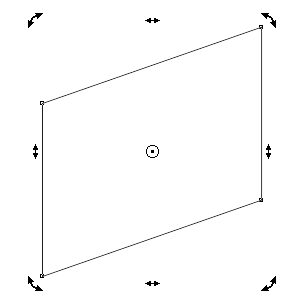
Stretching: It enables us to modify the width and height of the object non-proportionally.
To stretch an object
- Drag the handle of middle selection.
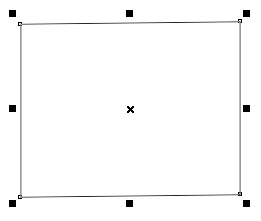
Mirroring: It enables us to create a vertical and horizontal mirror image of the object.
To mirror an object
- Keep pressing Ctrl, and then drag the selection handle in the object's opposite side.
Rotating: It enables us to turn any object around the center point or an axis relative to the position.
To rotate an object
- Press on the object for showing the rotation handles, and then drag the rotation handle.
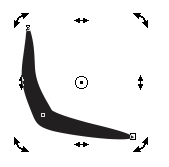
Making boundary around chosen objects
We can automatically make any path around chosen objects over a layer for making the boundary. It can be useful for several objectives, like to generate cut lines and keylines.
The boundary can be made by the closed path which pursues the selected object's shape. The default outline and fill attributes use to an object made by a boundary.
To make the boundary around chosen objects
- Choose an object that we wish to surround along with the boundary.
- Click on Object > Shaping > Boundary.
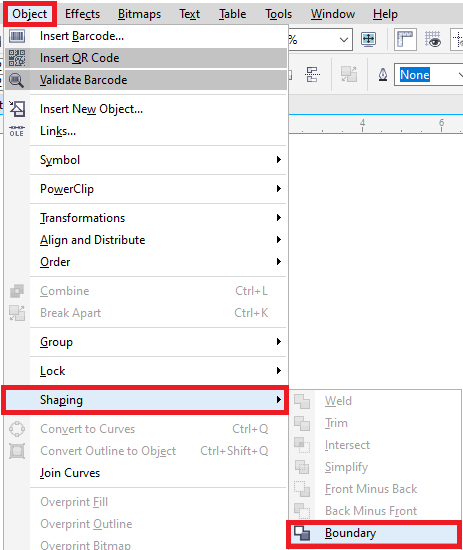
Making objects from disclosing areas
We can make objects from various areas disclosed by some other objects. Such as, when we draw the freehand line and these lines cross on it for creating loops. We can make objects from a loop shape. An object can be created inside the area's shape if an area is fully enclosed.
Object coordinates usage to modify and create objects
We can apply the docker object coordinates to modify and create lines and shapes precision. A live preview within a drawing window enables us to see our adjustment's effects.
Creating Squares and rectangles
To create a rectangle along with precision, we can describe the origin point that can be defined as only one point of the rectangle (a center point, four midpoints, four corner points). When we rotate a rectangle, an origin point can be applied as the rotation's center. Also, we can describe the rotation's angle and height and width of the rectangle.
To modify or draw the rectangle with object coordinates
1. Press Window > Dockers > Object coordinates.
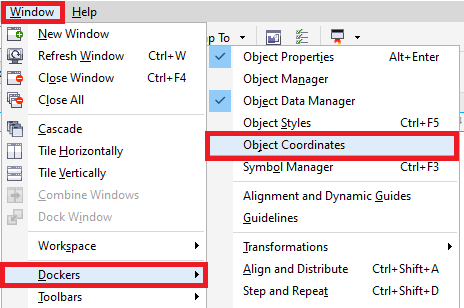
2. Press on the Rectangle
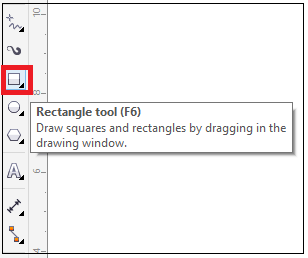
3. Select any one adjustments from the following:
- Press the point inside the Origin area to set the rectangle's origin point.
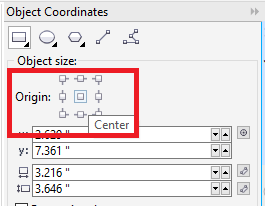
- Fill the values inside the Object size boxes to set the rectangle's height and width.
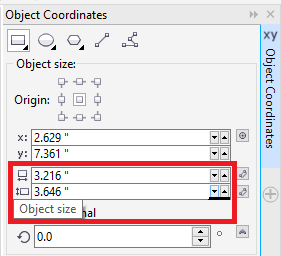
4. Press any one from the following:
- Replace object: It will add any new rectangle into the drawing window.
- Create object: It will replace the chosen rectangle along with any new one.
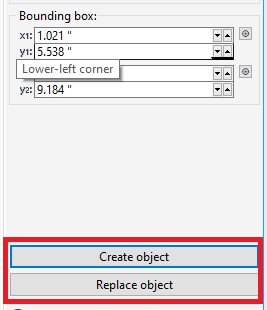
Creating circles and ellipses
To create an ellipse along with precision, we can describe the origin point, and these can be used to draw around an ellipse. This origin point can be applied to the rotation's center.
To create a circle, we can define an origin point, rotation's angle, and diameter.
To modify or draw an ellipse with object coordinates
1. Press Window > Dockers > Object coordinates.
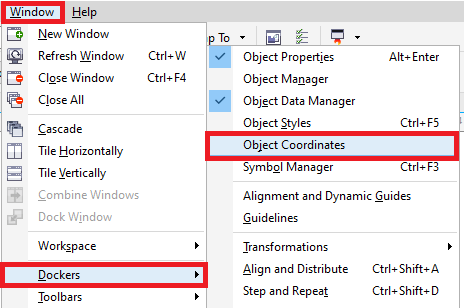
2. Press on the Ellipse
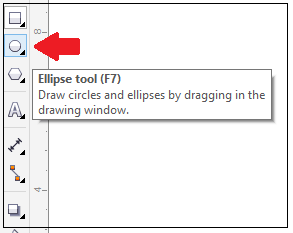
3. Select any one adjustments from the following:
- Press the point inside the Origin area to set the ellipse's origin point.
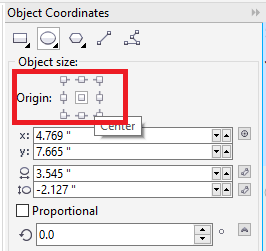
- Fill the values inside the Object size boxes to set the ellipse's diameter (height and width).
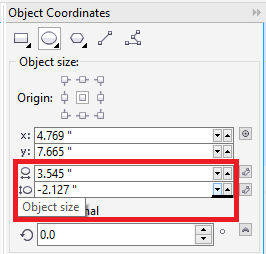
4. Press any one from the following:
- Replace object: It will add any new ellipse into the drawing window.
- Create object: It will replace the chosen ellipse along with any new one.
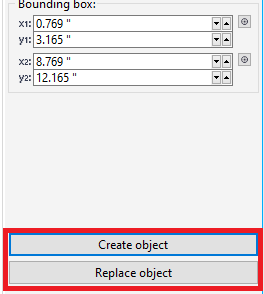
Creating Polygons
To create a polygon, we can define the side's number, rotation's angle, or a center and boundary ellipse's diameter that could be created around a polygon. The boundary ellipse's center also called "polygon center", can be applied as the rotation's center.
To modify or draw the polygon with object coordinates
1. Press Window > Dockers > Object coordinates.
2. Press on the Polygon
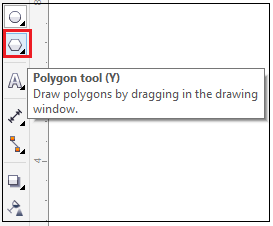
3. Fill the value inside the Points or sides box within the Object size
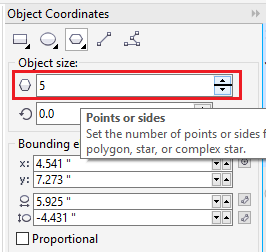
4. Select any one adjustments from the following:
- Fill the values inside the Angle of rotation box to rotate any polygon at the specified angle.
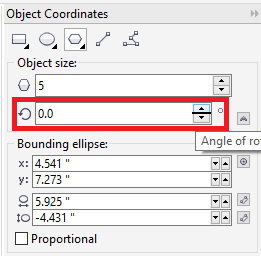
- Fill the values inside the Objects size boxes within the Bounding ellipse place to describe the bounding ellipse's diameter around a polygon.
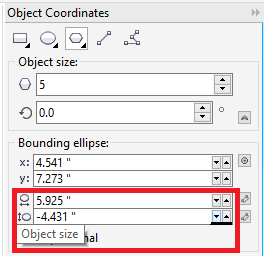
5. Press any one from the following:
- Replace object: It will add any new polygon into the drawing window.
- Create object: It will replace the chosen polygon along with any new one.

Creating Lines
We can create a line with the use of some methods. We define the starting and ending point of a line with this first method. We can define the length, start point, and rotation's angle of a line with this second method.
By specifying multiple points' coordinates, we can make various complex lines.
To modify or draw the polygon with object coordinates
1. Press Window > Dockers > Object coordinates.
2. Press on the 2-point line
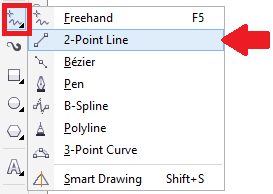
3. Fill the value inside the y and x box within the Points area to describe the endpoint and start point with y and x rulers.
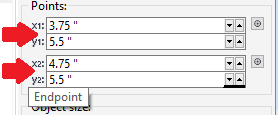
4. Press any one from the following:
- Replace object: It will add any new line into the drawing window.
- Create object: It will replace the chosen line along with any new one.

Copying objects effects, transformations, and properties
CorelDRAW enables us to copy properties from a single object to other objects. We can copy the object properties like text properties, fill, and outline. We can copy the object transformations like positioning, rotation, and sizing. Also, we can copy the effects used to the objects.
To copy the object properties like text properties, fill, and outline from a single object to other objects
1. Inside a toolbox, click on Attribute eyedropper.
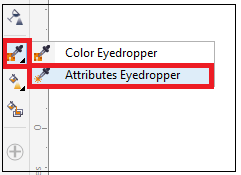
2. Click on Properties flyout over a property bar enable one of the below essential checkboxes:
- Text
- Fill
- Outline
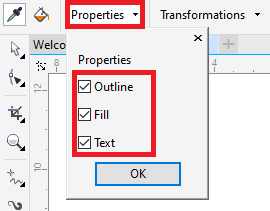
3. Click on the object whose attributes we wish to copy.
Attribute eyedropper automatically switches into the mode Apply object attributes.
4. Click on the object for which we wish to use copied properties.
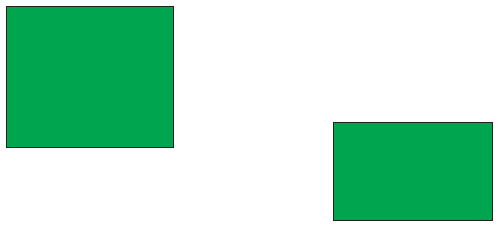
The options are enabled within the Effects and Transformations flyout over a property bar is also used if we copy properties.
To copy the effects from a single object to other objects
1. Inside a toolbox, click on Attributes eyedropper.
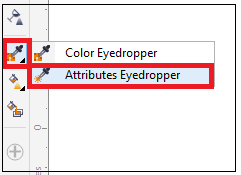
2. Click on Effects flyout over a property bar enable one of the below essential checkboxes:
- Distortion
- Drop shadow
- PowerClip
- Lens
- Contour
- Extrude
- Blend
- Envelope
- Perspective
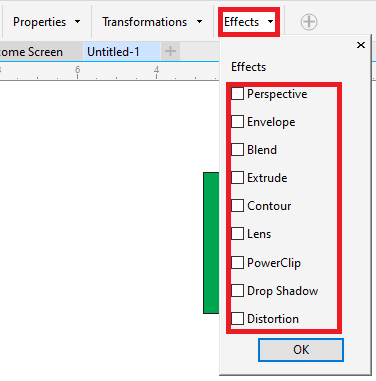
3. Click on the object whose attributes we wish to copy.
Attribute eyedropper automatically switches into the mode Apply object attributes.
4. Click on the object for which we wish to use copied properties.
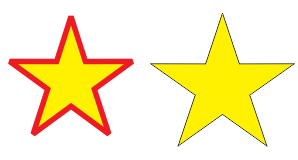
Cloning objects
If we clone the objects, we create the object's copy that is connected to an original one. Any modification we make to an original object is reflected inside a clone automatically. The modification we make to a clone is not reflected inside the original one automatically. We can remove the modifications made to a clone thru reverting to an original one.
Cloning enables us to change the object's copies simultaneously by modifying a master object. These types of changes are especially helpful when we wish to master objects and clone to differ by various properties, like outline color and fill, however wish a master object for controlling some other properties, like the shape.
We can apply the same object several times, rather than using the clones for keeping the size of the file manageable.
To clone the objects
1. Choose the object.
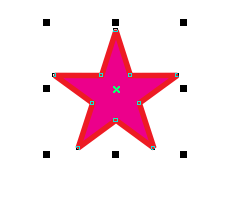
2. Click on Edit > Clone.
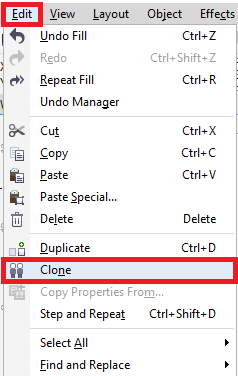
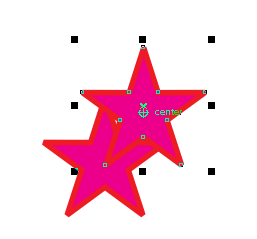
We can't clone the clone but we can clone the master objects.
Positioning objects
We can position an object by dragging them into the new location, by describing, or by nudging their vertical and horizontal coordinates.
Nudging enables us to move the objects within the increments through pressing an Arrow key. An increment value can be called "nudge distance". Also, we can change the super-nudge and micro-nudge values.
To position the objects, we can set vertical and horizontal coordinates which are connected to a center anchor point, and another anchor point, of an object.
To position the object by y and x coordinates
1. Choose the object.
2. Fill the values inside the below boxes:
- y: It enables us to position an object over the y-axis.
- x: It enables us to position an object over the x-axis.
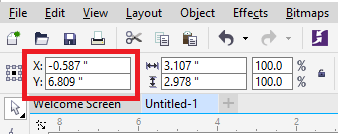
3. Click Enter.
Distributing and aligning objects
CorelDRAW enables us to distribute and precisely align the objects within the drawing. We can align the objects along with one another and with various drawing page's parts like the grid, edge, and center. If we align the objects along with some objects, we can also line-up them with their edges and center.
We can align several objects vertically and horizontally along with the drawing shape's center. Also, we can align the objects along with the reference point through describing its x coordinates and y coordinates.
Distribute the objects automatically inserts s space among them on the basis of their center points, width, and height. We can also distribute the objects. Hence, the selected edges and center points (such as right or top) represent at an equal interval. We can distribute the objects on an extent of a boundary box around them or on the whole drawing page.
To align the objects
1. Choose the objects.
2. Press Object > Align and distribute > Align and distribute.
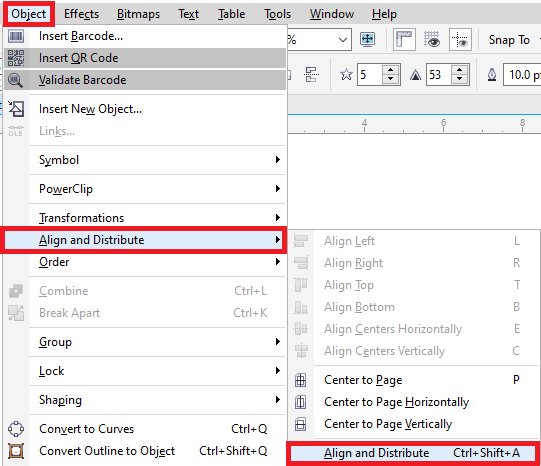
3. Within the docker's Align area, press anyone from the below options:
- Align left: It aligns the object's left edges.
- Align center horizontally: It aligns the center of an object with the vertical axis.
- Align right: It aligns the object's right edges.
- Align top: It aligns the object's top edges.
- Align center vertically: It aligns the center of an object with the horizontal axis.
- Align bottom: It aligns the object's bottom edges.
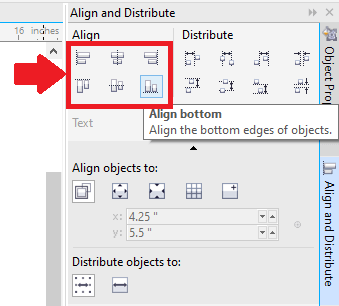
4. Within the Align objects to area, implement from the below tasks:
- Press the Active objects button to align the object along with the specific object.
- Press the Page edge button to align the object along with a page edge.
- Press the Page center button to align the object along with a page center.
- Press Grid button to align the object along with a closest grid line.
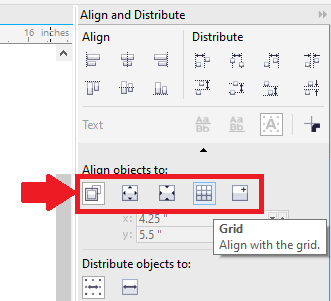
To distribute the objects
1. Choose the objects.
2. Press Object > Align and distribute > Align and distribute.
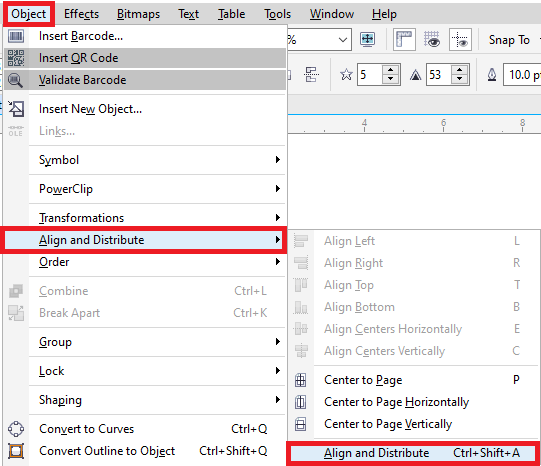
3. Press the below options to distribute the objects horizontally:
- Distribute left: It spaces the object's left edges evenly.
- Distribute center horizontally: It spaces the object's center point evenly along with the horizontal axis.
- Distribute right: It spaces the object's right edges evenly.
- Distribute space horizontally: It places the same interval among the objects along with the horizontal axis.
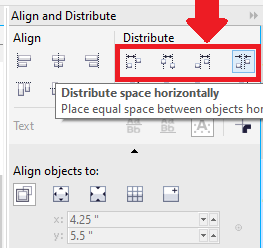
4. Press the below options to distribute the objects vertically:
- Distribute top: It spaces the object's top edges evenly.
- Distribute center vertically: It spaces the object's center point evenly along with the vertical axis.
- Distribute bottom: It spaces the object's bottom edges evenly.
- Distribute space vertically: It places the same interval among the objects along with the vertical axis.
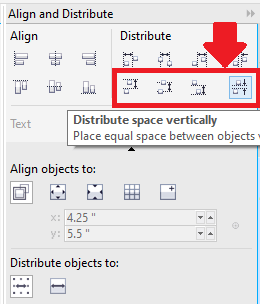
5. Press the below buttons inside the Distribute objects to area to select an area for which various objects have been distributed:
- Extent of selection: It distributes various objects over the bounding box's area surrounding them.
- Extent of page: It distributes various objects on the drawing page.
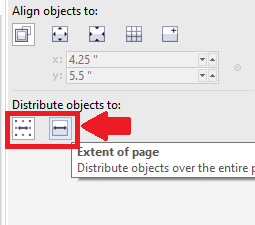
Using object hinting
The object hinting allows us to enhance the object rendering through adjusting an object's display. Hence, it lines-up along with a pixel-grid. Such as, when we are making the button to web, we can enable the object hinting for ensuring an object represents sharp and clean if export it as the bitmap.
To use the object hinting
- Choose the object.
- Click on Object > Object hinting.
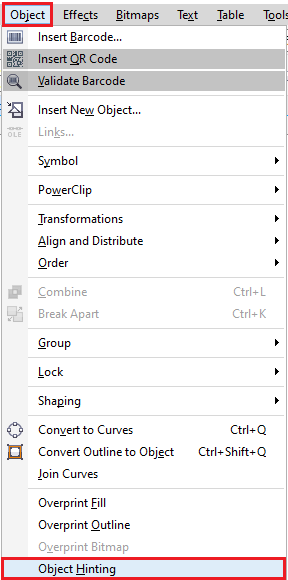




Comments